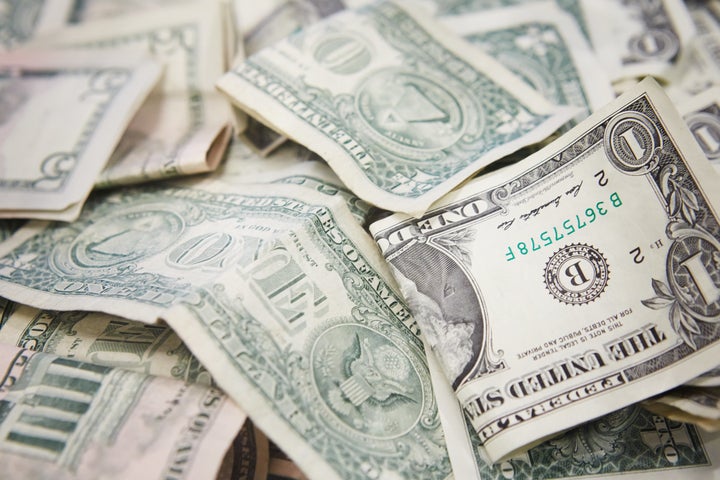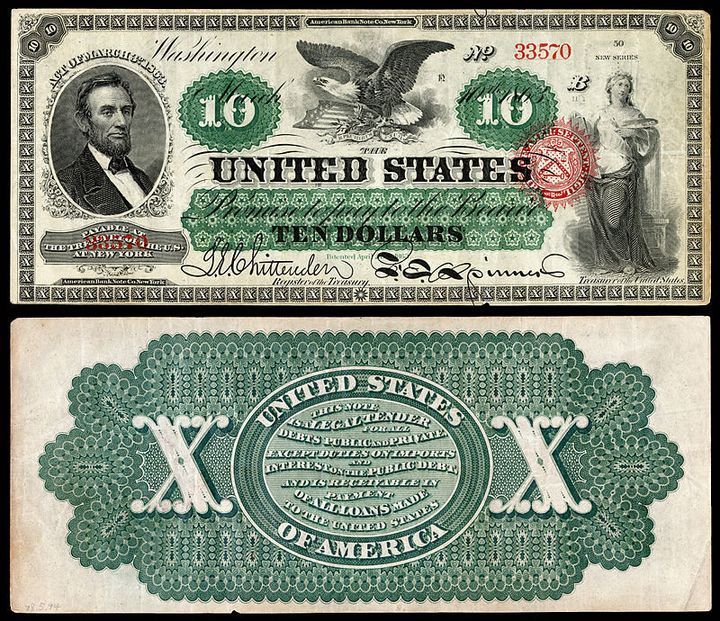
Moolah. Benjamins. Stacks. Big ones. Cheddar. We have a lot of slang terms for money in the U.S.
While the meaning behind some of these terms may seem obvious, it’s less intuitive for others. “Bucks,” which has become synonymous with “dollars” in modern vernacular, is one example of the latter.
So why do we call dollars “bucks”?
A widely held belief involves the use of the word “buck” to mean “a male animal; especially, a male deer or antelope.” Back in the 18th century, European settlers and Native Americans often traded buckskins, or deerskins, as a form of currency.
One of the earliest cited references to bucks as currency is a 1748 journal entry from Conrad Weiser, a Pennsylvania Dutch pioneer, interpreter and diplomat. In his journal, he described the rate for a cask of whiskey as “5 Bucks,” reportedly in reference to deerskins. The journal also cited a man who was “robbed of the value of 300 Bucks.”

One deerskin wasn’t necessarily the equivalent of one “buck,” as various factors could determine the value, like the size, quality, age of the deer and more.
Official U.S. dollars weren’t minted until several decades after Weiser’s journal entries, but it appears buckskins and the word buck stuck around in the currency arena.
The Oxford English Dictionary lists a usage of “bucks” to mean “dollars” from the Democratic State Journal in 1856: “Bernard, assault and battery upon Wm. Croft, mulcted in the sum of twenty bucks.”
Evidence from the 19th century also suggests a buckskin was sometimes the equivalent of one dollar.
Henry Howe’s 1851 Historical Collections of Ohio states, “A muskrat skin was equal to a quarter of a dollar; a raccoon skin, a third of a dollar; a doe skin, half a dollar, and a buck skin, ‘the almighty dollar.’” James Buchanan’s Sketches of the History, Manners, and Customs of North American Indians from 1824 lists “each buck-skin one dollar.”
Although the deerskin origin story is a popular one, there are other theories beyond this folklore.
One idea is that “buck” is just a shortened form of the word “sawbuck,” which is slang for a $10 bill. This is thought to be because one of the earliest $10 bills featured the Roman numeral X, which resembles a “sawbuck” ― a frame for holding wood to be chopped and sawed.

Although “sawbuck” meant a $10 bill, the shortened “buck” generally referred to the U.S. paper currency introduced in the 1860s and later came to specify one dollar, according to Russell A. Potter, a professor of English and media studies at Rhode Island College.
In a discussion on historian Mary Miley Theobald’s History Myths Debunked blog, Potter wrote, “The derivation of buck (dollar) from the trade in deerskins is (in my view) unlikely, as the usage is quite scarce prior to the introduction of paper currency.”
The professor acknowledged that words can have multiple origins that developed during different times and places ― but posited the sawbuck theory as a more plausible explanation, especially because “buck” didn’t become nationally popular until the late 19th century.
“The ‘sawbuck’ theory has the advantage of a clearer line of plausible transmission, but even with that theory, there are relatively few examples until late in this same period (as a casual slang term, it likely had a long gestation in common parlance before it began to see the light of print),” Potter explained. “I would certainly say that the deerskin theory should not be presented as unquestionably true; offering it alongside the ‘sawbuck’/$10 theory is probably about the best that can be done.”
Yet another theory relates the slang “buck” to the game of poker.

A marker or counter, like a knife with a buckhorn handle in the 19th century American frontier, was passed around to indicate whose turn it was to deal.
Many believe the buckhorn handled knife in poker is the source of the phrase “pass the buck,” which means to shift the responsibility for something to someone else. The idea is that a player who did not want to be the dealer could pass the buckhorn knife, that is “pass the buck,” and make the next player take up the responsibility of dealing. (Others say the marker was a piece of buckshot, and that’s why it was called a “buck.”)
Silver dollars were reportedly later used as markers, leading some to believe that this is the reason people came to call dollars “bucks.”
Clearly, there’s no strong consensus on the origin of the word “buck” for dollar, but most of us can probably agree that it might be nice to have a few more in our bank accounts.